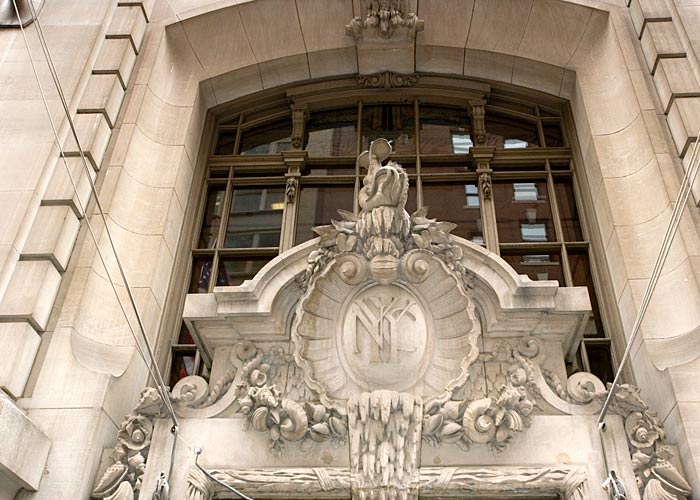44th Street Clubhouse
From "The Clubhouse at Sea" by John Rousmaniere
The New York Yacht Club established a set of objectives for the new clubhouse and sent it to more than a dozen architects with invitations to compete for the commission. Leading the list of stated goals was a suitable Model Room: "This is the principal room, and it is to be used for the regular meetings of the Club, and also on more public occasions. It should be large and high, capable of containing 300 people, and containing approximately 3,800 square feet. Upon the walls space must be provided for exhibiting the models now in the club's possession, with ample space for future additions, and they must be set not so much above the eye but that can be easily examined and studied." Next in importance was a library to house as many as 15,000 books, then a chart room where captains could plan their summer cruises.

The Club chose a design of Whitney Warren's. His exquisite drawings presented something far more exuberant, nautical and eclectic. Dominating the front were three huge galleon-style windows pushing out over the sidewalk, pouring out sinuous braids of seaweed and exposing the immense Model Room to the eyes of passersby. Off in the corner (in clear violation of the classic rules of symmetry) stood the doorway under its own display of maritime decoration. This highly unusual, unbalanced arrangement and the three-dimensional carvings combined to make the building look far larger than its 75-foot width and far more fluid than the heavy-limestone construction could reasonably be expected to allow.
Warren understood the Club's purpose at both the practical and symbolic level, and he was able to express that appreciation of its identity in his plan as well as in his written essay. Warren dispensed with technical language. The New York Yacht Club, he wrote, must present itself not as "an ordinary social institution" but as a building whose mission is "the furtherance of naval architecture from the amateur point of view." Warren's inclusion of the adjective amateur is telling. Amateurs romanticize their interests; most professionals do not.
Warren zeroed in on the Model Room: "This room is essentially ‘The Club.'" His schematic plan for the room overflows with details of the sea's history and traditions. Warren's drawings show marine natural life, astrolabes, globes and many yacht and ship models.
If 37 West 44th Street had scriptural inspiration, it surely would be the verses in Psalm 104 (King James Version) that read: "Oh Lord, how manifold are thy works! in wisdom has thou made them all: the earth is full of thy riches. So is this great and wide sea, wherein are things creeping innumerable, both small and great beasts. There go the ships: there is that leviathan, whom thou has made to play therein."
Seaweed, snails, shells, dolphins, lightning bolts, clouds, stars. They all are there, even leviathans and other sea monsters snarling from the balcony, and around them all sail the ships. Robert A. M. Stern, dean of the Yale School of Architecture, calls this Warren's "masterpiece of bravado." But the daring does not end there, for this great sea is itself contained within the great ship of the building, a galleon on a course uptown upon the great expanse of the city….
Warren's world was changing in the nineteen-twenties with the rise of skyscrapers and modernism's sweeping away of romantic symbolism. In 1926 he said that what New York needed was "a little peace." He continued: "Ancient traditions of pure melody clash along the avenue with the modern dissonance of jazz; the towering aggressive structures of industry and commerce are like the clarion calls of architecture, all about us. What to do? Man is not always strident, the soul is not always in haste, the eye does not always seek the restless gesture of the sky-scraper, never attaining its sky."
There is no industrial restlessness in Whitney Warren's remarkable building on West 44th Street. Here, all that moves is the imaginary bow wave under a favorite model and, if one looks at the fireplace long enough, the occasional sway of the seaweed. The air sometimes smells of salt.
An excerpt from John Rousmaniere's "The Clubhouse at Sea" -- published by the New York Yacht Club in 2001.
37 West 44th Street, New York, NY 10036 USA
+1(212) 382-1000 Fax: +1(212) 391-6368

